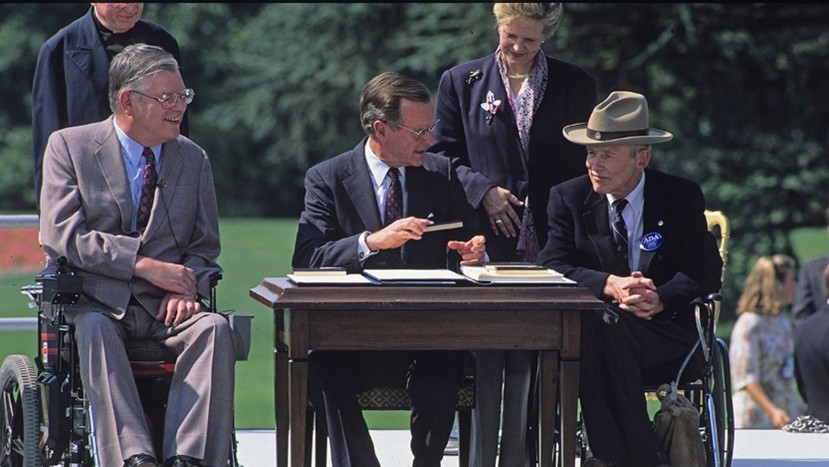 This Saturday marks the 35th anniversary of the Americans with Disabilities Act (ADA)—a significant milestone that should be recognized for the decades of diligent work and public advocacy that helped put this law in place.
This Saturday marks the 35th anniversary of the Americans with Disabilities Act (ADA)—a significant milestone that should be recognized for the decades of diligent work and public advocacy that helped put this law in place.
ADA is a civil rights law that prevents discrimination against individuals with disabilities in areas of public life. The act protects individuals in the areas of employment, state and local government activities, public transportation, public accommodations, and telecommunication services.
Historical Overview
The disability rights movement traces its origins back to the 1800s and 1900s. The social norm at that time was to institutionalize children and adults with disabilities and deny them access to freedoms of daily life like access to education. As a result, parents, individuals with disabilities, allies and government-connected advocates pushed strongly for equal rights.
The disability rights movements began with early advocacy groups forming to support individuals with disabilities. In the 1900s, it gained more widespread popularity as parents pushed back against the idea of institutionalizing their children. In fact, Noble was founded by families like these in 1953 to provide their kids with what society would not—an education. This was quite a rarity as there was no federal or state law mandating an open door to public education for children with disabilities.
The disability rights movement of the 1950s and 60s was modeled after the Civil Rights movement, using similar protest strategies like sit-ins and marches. A major turning point came in 1973, with the passage of Section 504 of the Rehabilitation Act. This was modeled on the Civil Rights Act—specifically Title 6 and 9. Section 504 protects against discrimination based on disability in publicly funded programs in the same way that the Civil Rights Act protects against discrimination based on race, color, religion, national origin, and sex. The Individuals with Disabilities Education Act soon followed in 1975, specifically mandating a free, appropriate public education in the least restrictive environment for children with disabilities.
Soon after the passage of these laws, they were at risk of being weakened or removed, but the persistence of parents and fellow advocates prevented this from happening. One of the most significant protests was the sit-in staged at the San Francisco Federal Building. It lasted 26 days and is marked as the longest occupation of a federal building in the United States. This forced a much greater public awareness of the struggle faced by individuals with disabilities. Following this came the first draft of the ADA in 1988, and on July 26, 1990, President George H. W. Bush signed it into law.
Importance
The importance of the ADA lies in ensuring that everyone can live life on their own terms. Before the ADA, individuals with disabilities faced significant daily challenges to their rights and widespread discrimination.
Since its passage 35 years ago, accessibility in public life has significantly improved. Among the most impactful changes are accessible public transportation, businesses and government buildings, inclusive workplaces, and equal access to public spaces. And although the ADA has led to meaningful change, continued advocacy and awareness are needed to build an even more inclusive society.










